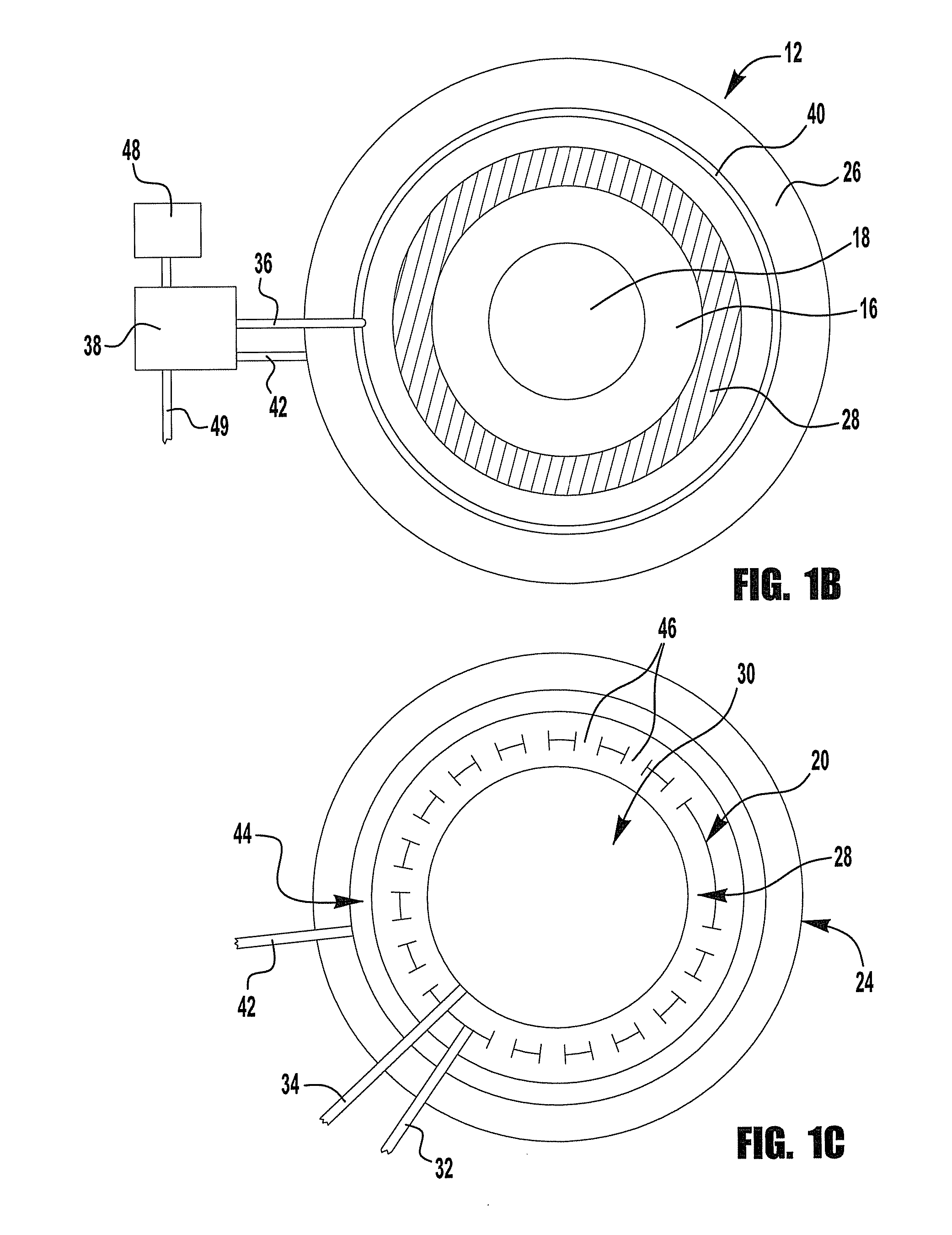Carbon dioxide removal systems
a carbon dioxide and system technology, applied in the field of carbon dioxide removal systems, can solve the problems of significant amount of effort, no satisfactory results, and doubt that the world will give up or even materially reduce the use of fossil fuels (i.e., coal, petroleum natural gas) in the foreseeable futur
- Summary
- Abstract
- Description
- Claims
- Application Information
AI Technical Summary
Problems solved by technology
Method used
Image
Examples
example 1
Plant Configurations Using Waste Heat from Oil Refinery Flare Gas &“Pseudo Cooling Towers” to Capture Coτusing an Absorber / Spray Column
[0098]This example describes the use of waste flue gas from an industrial power source (e.g., a refinery) to heat air in a pseudo cooling tower constructed to simulate the flow of atmospheric air in a power plant cooling tower. A schematic representation of this embodiment of the invention is shown in FIG. 4. The flare gas is burned with a separate source of air by burners that are inserted in the middle section of the pseudo-cooling tower. The combustion gases mix and heat the air towards the top section of the pseudo-cooling tower 50 thus reducing the density of the gases at the top pseudo-cooling tower and causing the air to flow up, drawing atmospheric air 14 into the pseudo-cooling tower 50. At the same time a concentrated K2CO3 solution is sprayed down from the top the pseudo-cooling tower, allowing it to absorb the CO2 from the rising air and ...
example 2
Plant Configurations Using Waste Heat from Oil Refinery Flare Gas &“Simulated Cooling Towers” to CO2 Using a Wetted Wall CO2 Absorber
[0111]In many respects the second example is similar to that provided in Example 1. A schematic representation of this embodiment of the invention is shown in FIG. 5. Here again waste flue gas from an industrial power source (e.g., a refinery) is used to heat air in a pseudo-cooling tower 50 constructed to simulate the flow of atmospheric air in a power plant cooling tower. The flare gas burners, pointing upward are inserted midway in the pseudo-cooling tower 50 in order to heat the air and combustion gases in the upper section of the pseudo-cooling tower. Therefore the density of the air and combustion gases above this point is lower than that at the bottom of the pseudo-cooling tower causing air flow not unlike that in a power plant natural draft cooling tower with air migrating up in the pseudo-cooling tower.
[0112]Assuming a 20° F. (11.1° C.) increa...
example 3
Flare Gas Required to Move Air from Atmosphere Through Pseudo-Cooling Tower
[0122]The amount of air that can be heated by flare gas produced by a 150,000 bbl / day oil refinery is based on the following numbers and calculations. The conditions are those described in Example 1. The CO2 output from flare gas combustion produced by average refinery is about 0.0425 T CO2 / bbl, based on US Refineries CO2=304.8×106 T CO2 / yr & Capacity=17.7×106 bbls oil / day). The BTU value of flare gas=1583 BTU / ft3 & CO2=0.203 lbs / ft3 of flare gas, based on composition & heat of combustion Hydrocarbon Processing tables. Lb CO2ZMMBTU=0.203×106 / 1583=128 lb / MMBTU.
[0123]The amount Of CO2 from flare gas at 150,000 bbl / D=150×103×0.0425=6,375 T CO2 / D. The heat generated by flare gas=6375×2000 / 128 lb / MMBTU=0.1×1012 BTU / D. The amount of atmospheric air that can be heated to raise temp by 20° F. is calculated by tons Air / D=0.1×1012 BTU / D / (29 lb / mol×7 BTU / mol-F 20° F.×2000)=10.4×106 T / D. The CO2 capture from atmospheric ...
PUM
| Property | Measurement | Unit |
|---|---|---|
| Temperature | aaaaa | aaaaa |
| Temperature | aaaaa | aaaaa |
| Fraction | aaaaa | aaaaa |
Abstract
Description
Claims
Application Information
 Login to View More
Login to View More - R&D
- Intellectual Property
- Life Sciences
- Materials
- Tech Scout
- Unparalleled Data Quality
- Higher Quality Content
- 60% Fewer Hallucinations
Browse by: Latest US Patents, China's latest patents, Technical Efficacy Thesaurus, Application Domain, Technology Topic, Popular Technical Reports.
© 2025 PatSnap. All rights reserved.Legal|Privacy policy|Modern Slavery Act Transparency Statement|Sitemap|About US| Contact US: help@patsnap.com



